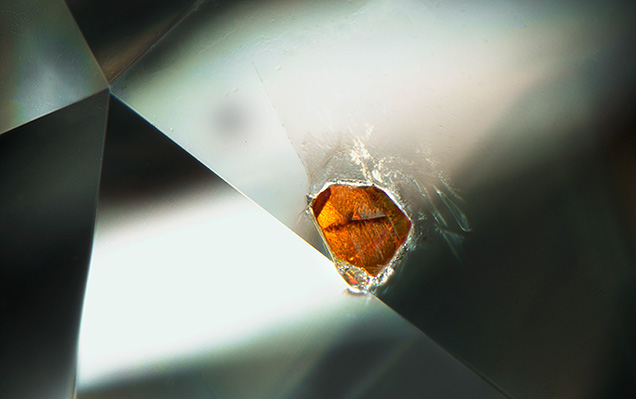Large Orange Rutile Inclusion in a “Chameleon” Diamond

The author recently received for analysis a 1.51 ct round brilliant diamond with very light green color and SI2 clarity. The diamond exhibited “chameleon” properties, showing a clear color change from green to yellow upon heating with an alcohol lamp. An ~0.2 mm orange inclusion was clearly visible on the crown (see above). The crystal was partially enclosed, confirming it was an actual inclusion rather than a crystal adhered to the diamond surface. It was also partially exposed, enabling simple Raman spectroscopy for identification without the spectra showing any contribution from the diamond itself. The crystal was determined to be rutile (TiO2), suggesting an eclogitic origin.
Rutile inclusions in diamond are themselves relatively uncommon, and we rarely see such a large, eye-catching crystal. Rutile inclusions can also provide useful clues about a diamond’s age. Geochemists can determine the age of rutile crystals by measuring the concentration of isotopes of various elements that are present at parts-per-million concentrations, allowing for constraints on the age of the diamond itself (see A.K. Schmitt et al., “U-Pb ages of rare rutile inclusions in diamond indicate entrapment synchronous with kimberlite formation,” Lithos, Vol. 350-351, 2019, article no. 105251). It will be interesting to see what scientific information this rare inclusion in diamond may reveal.



